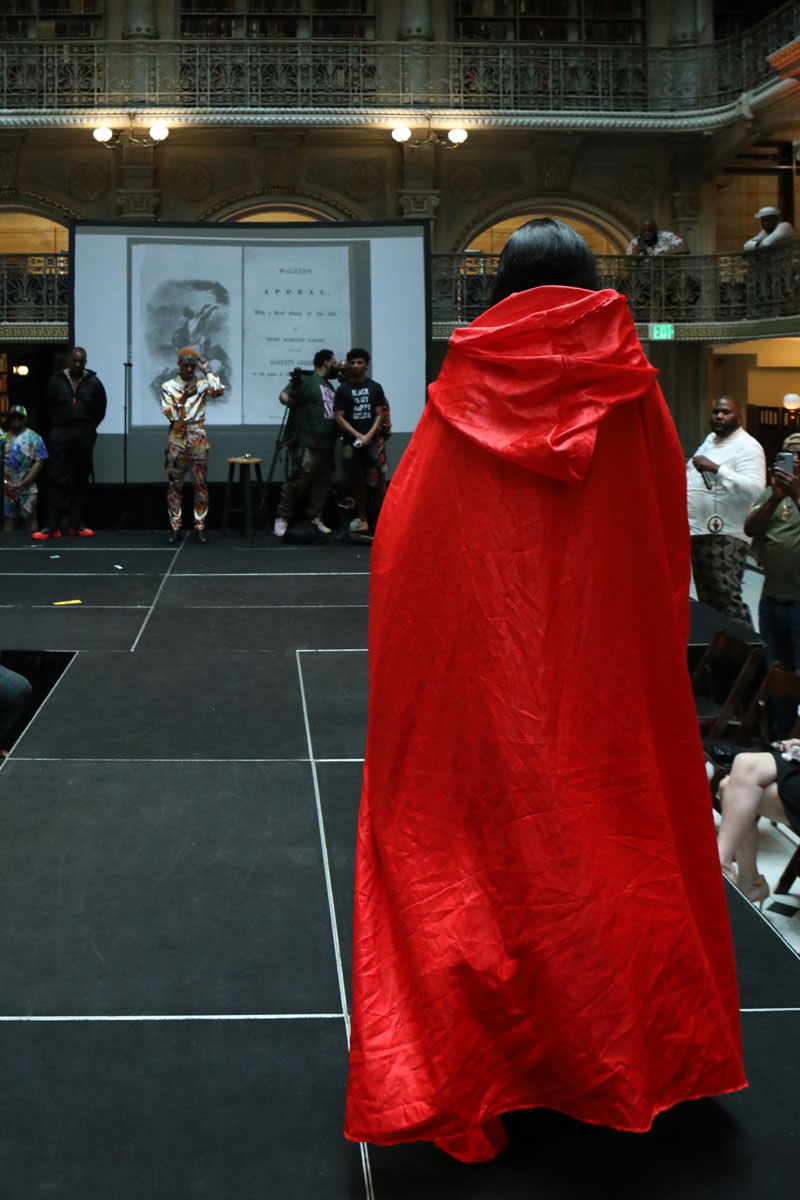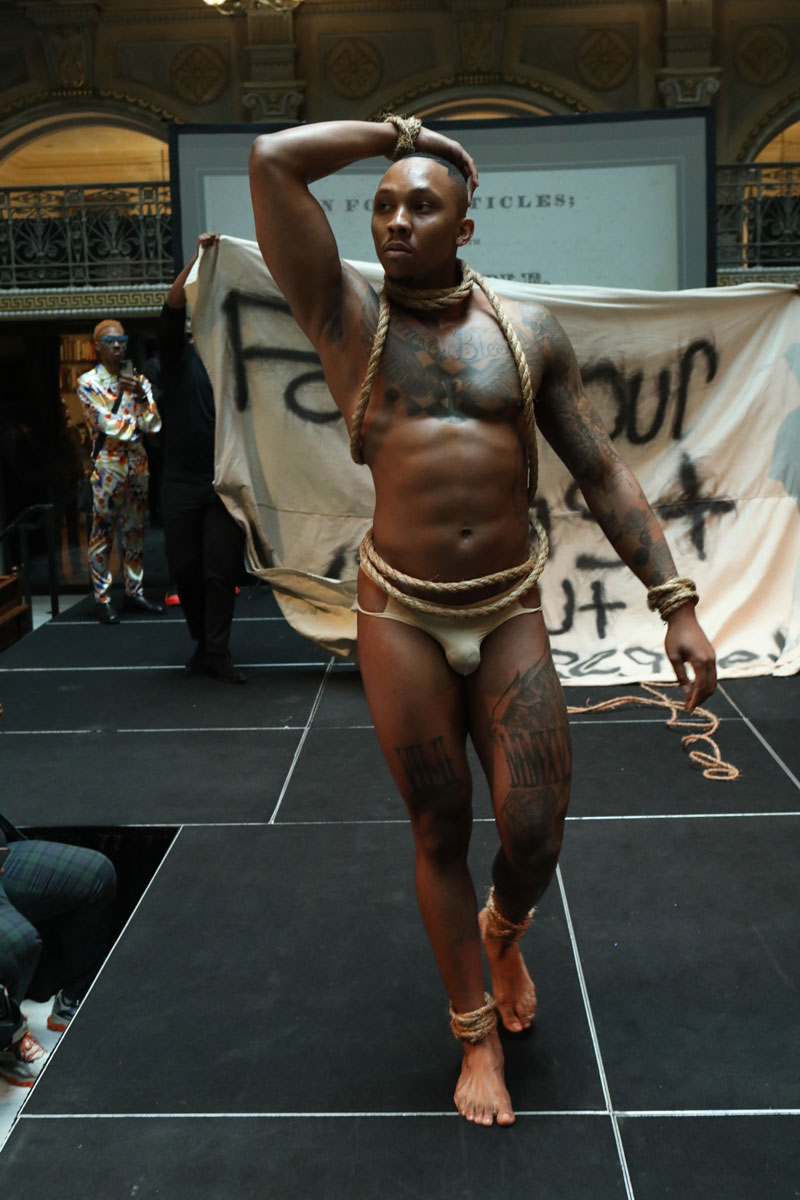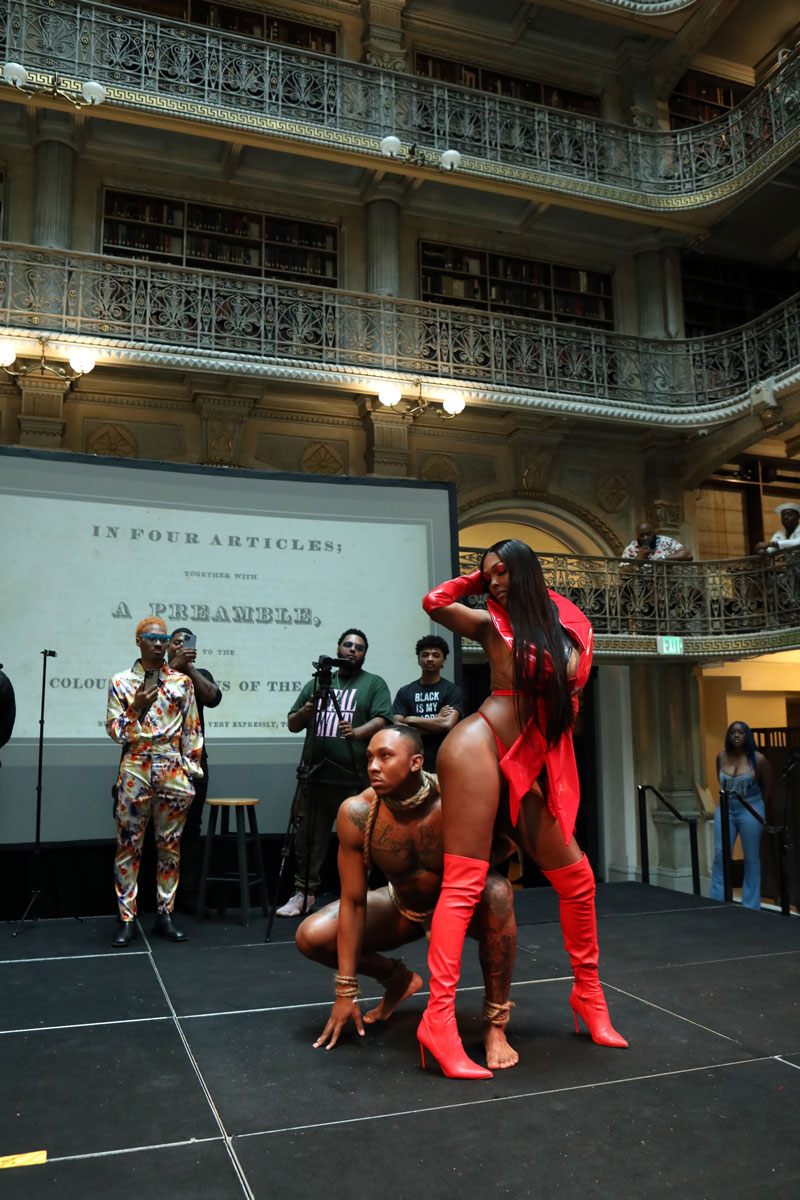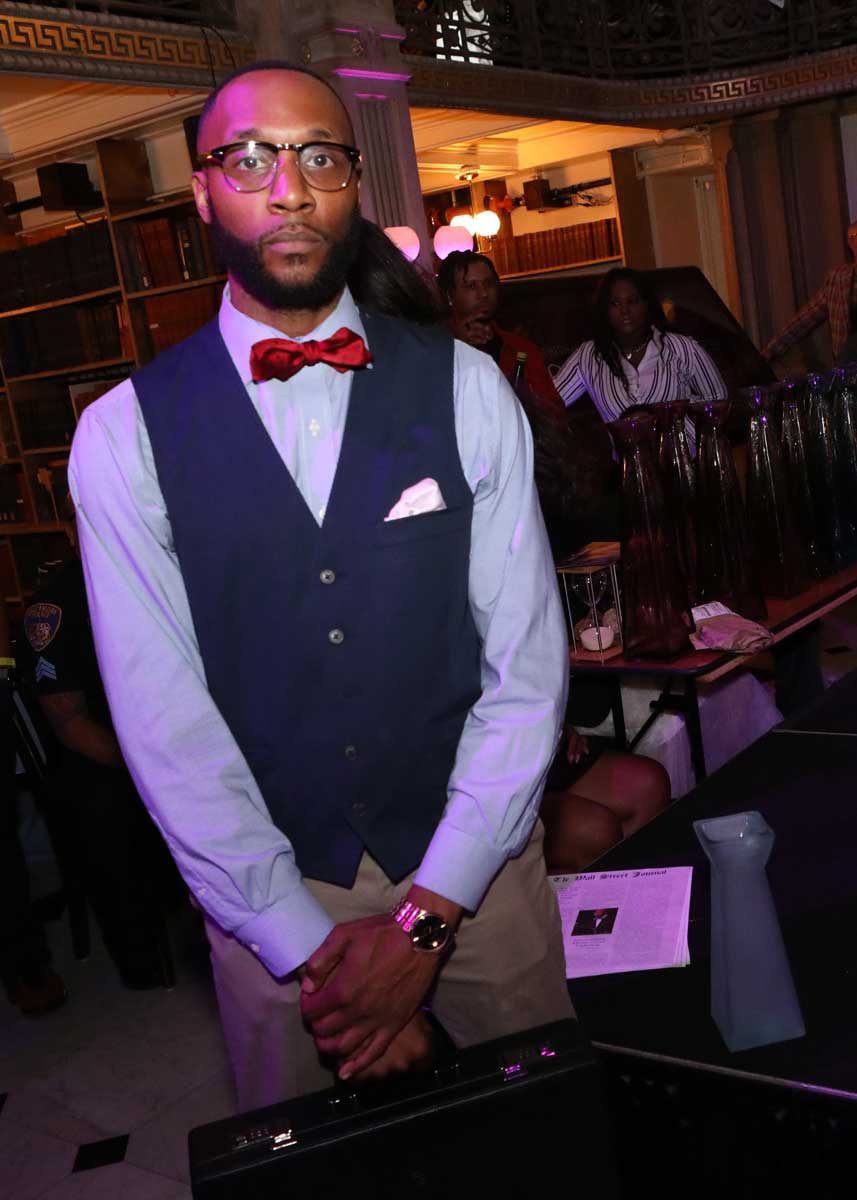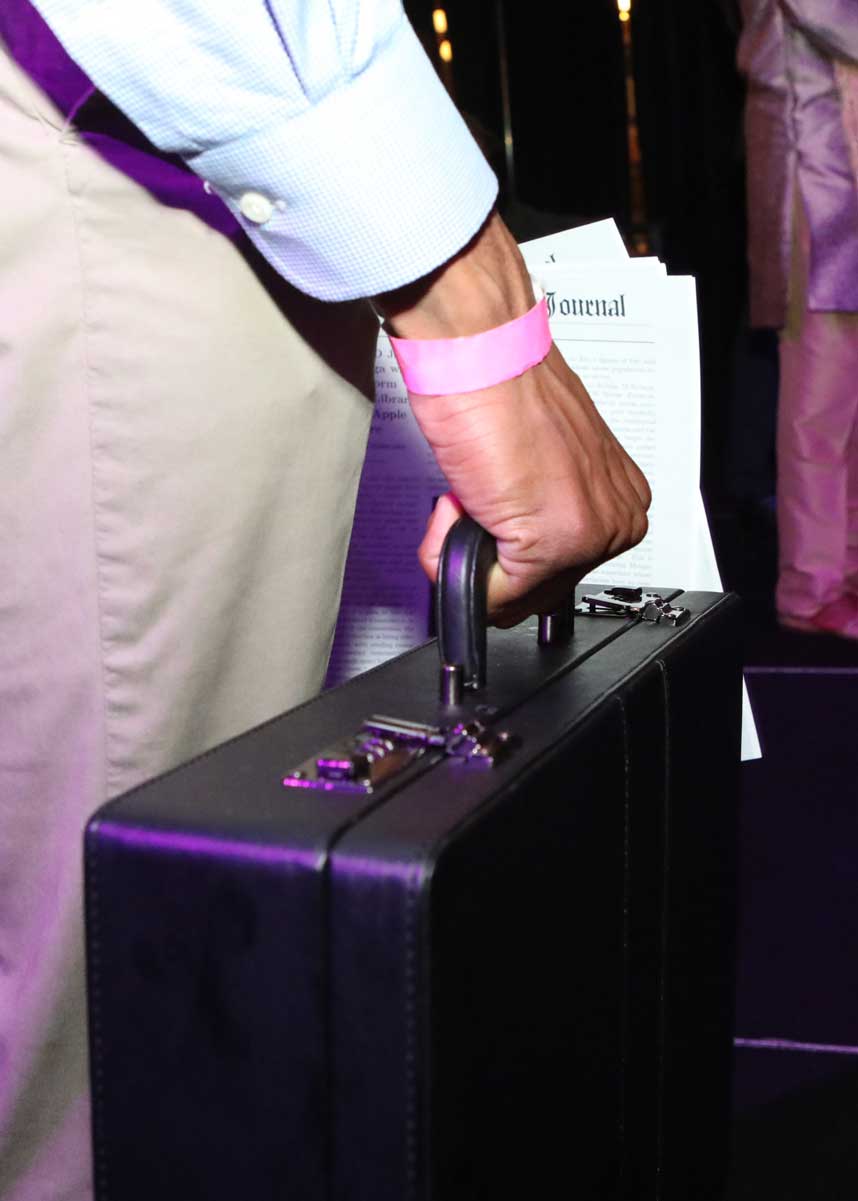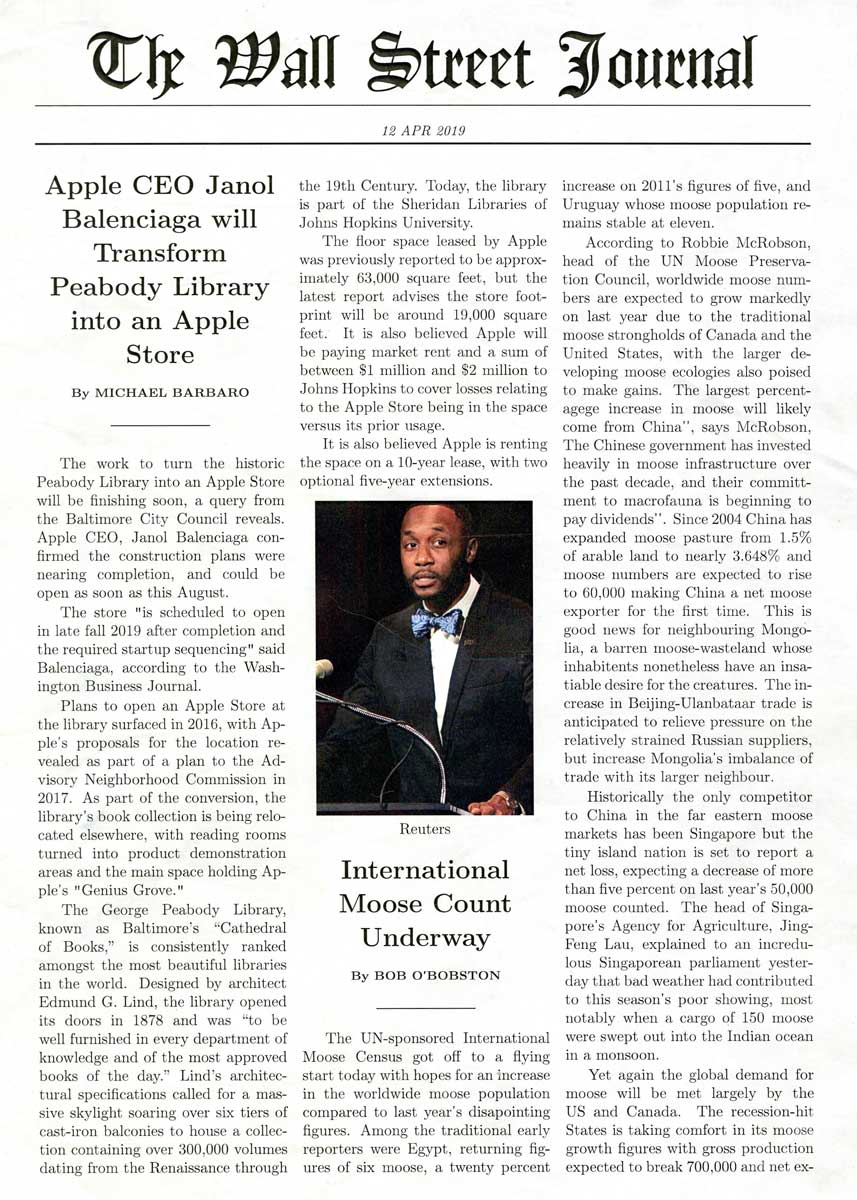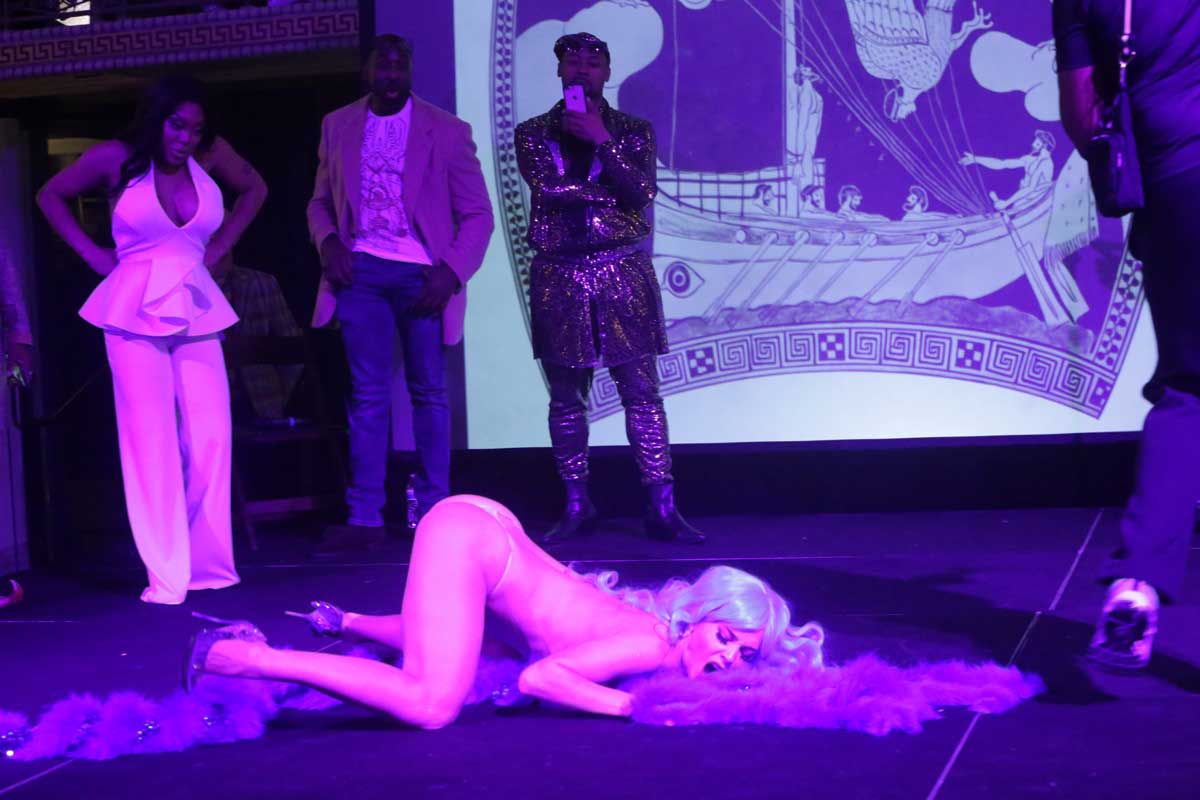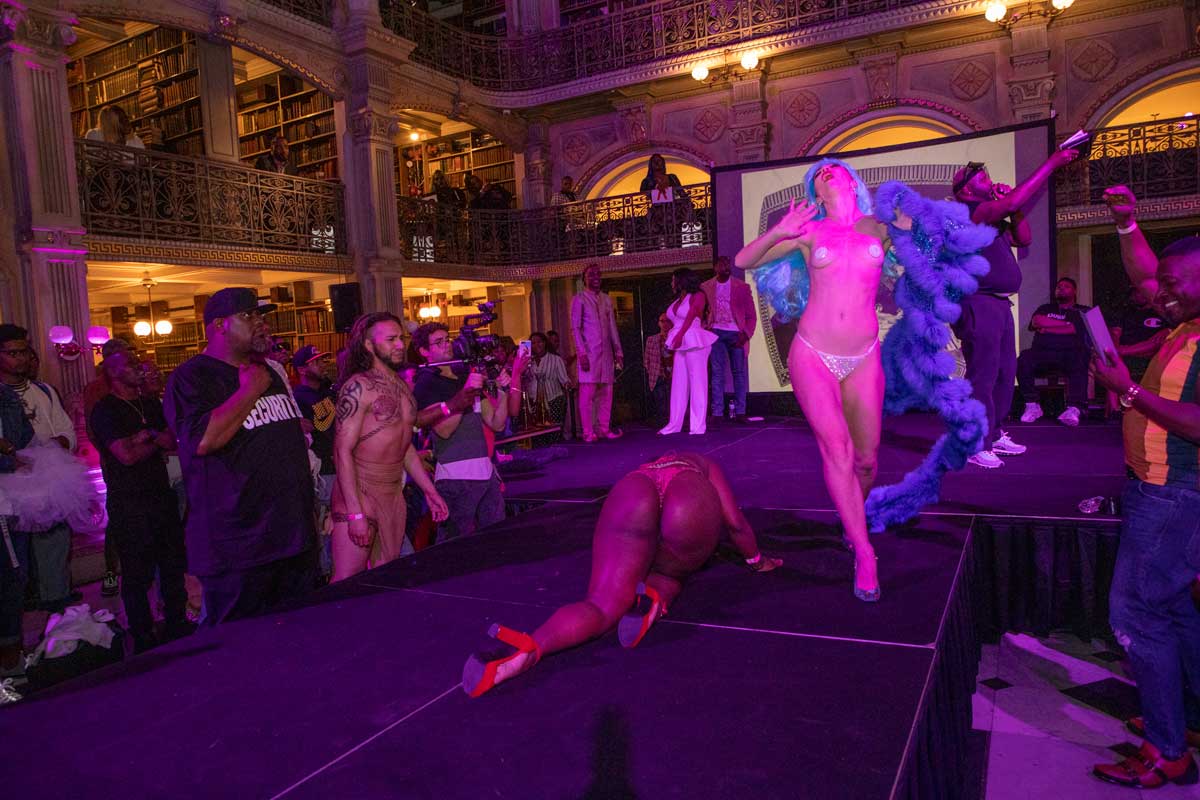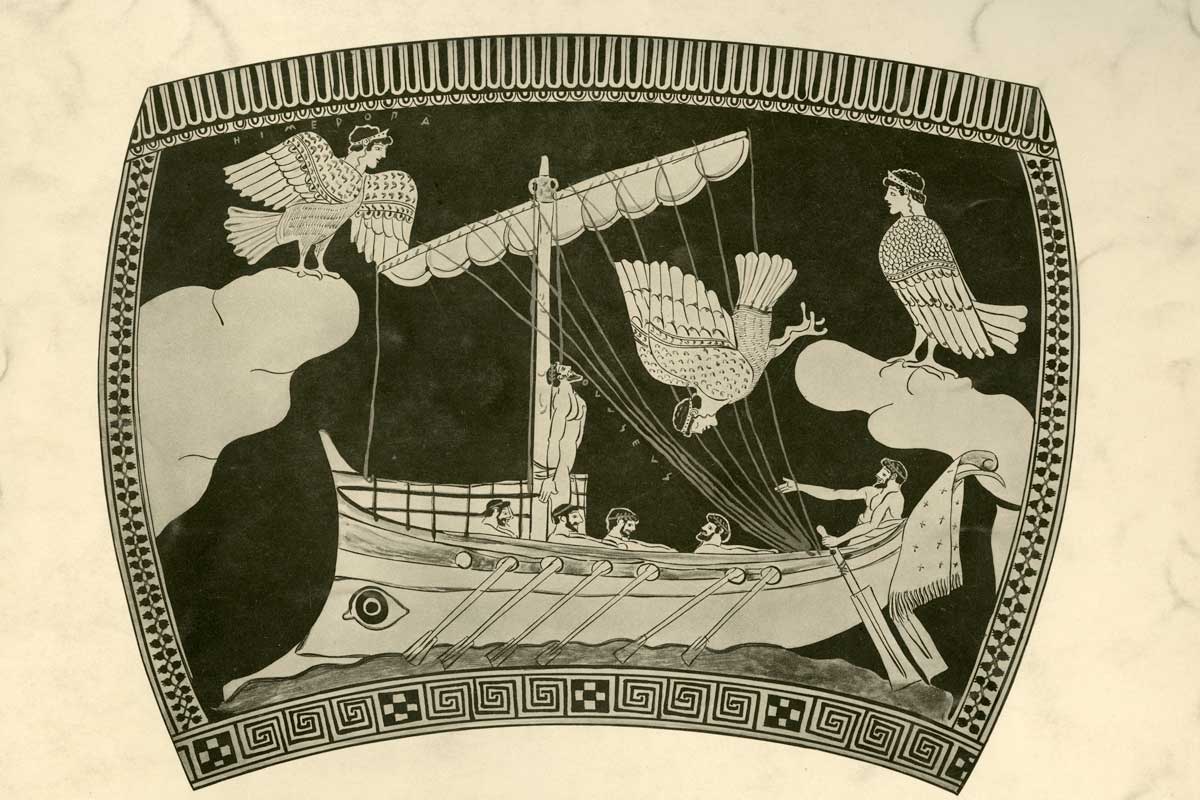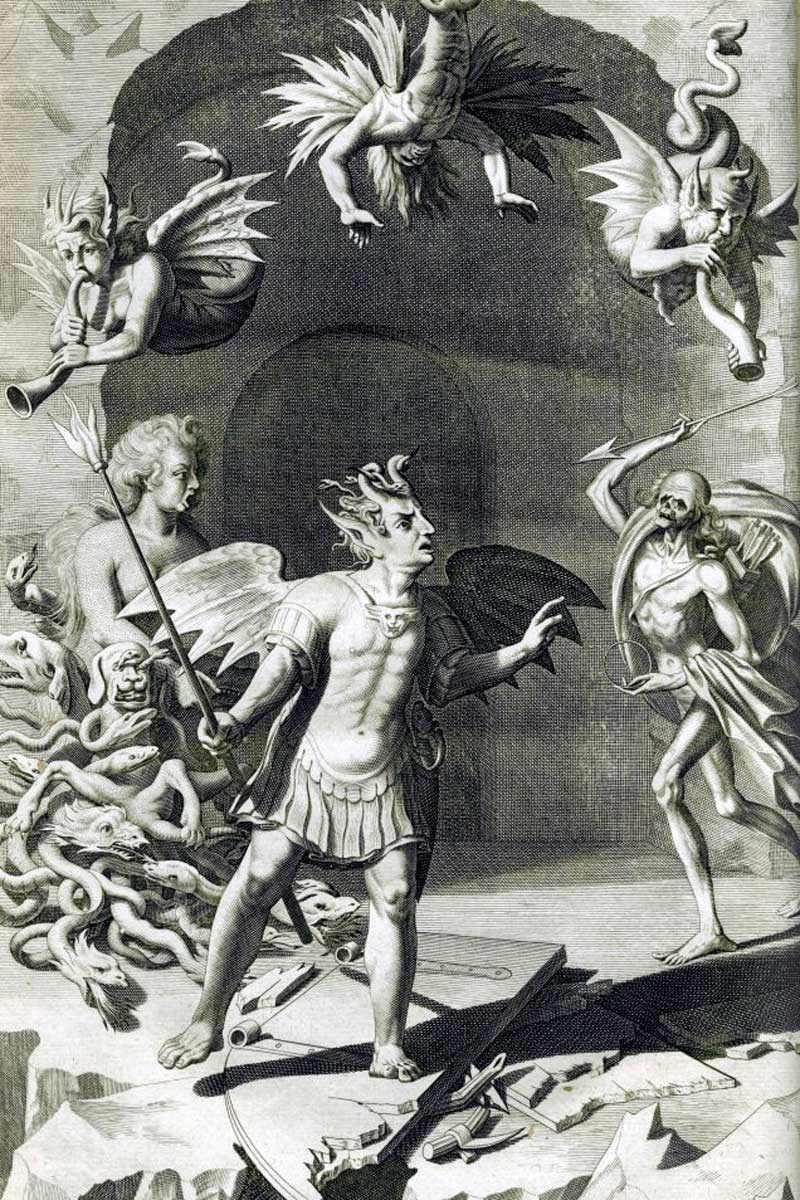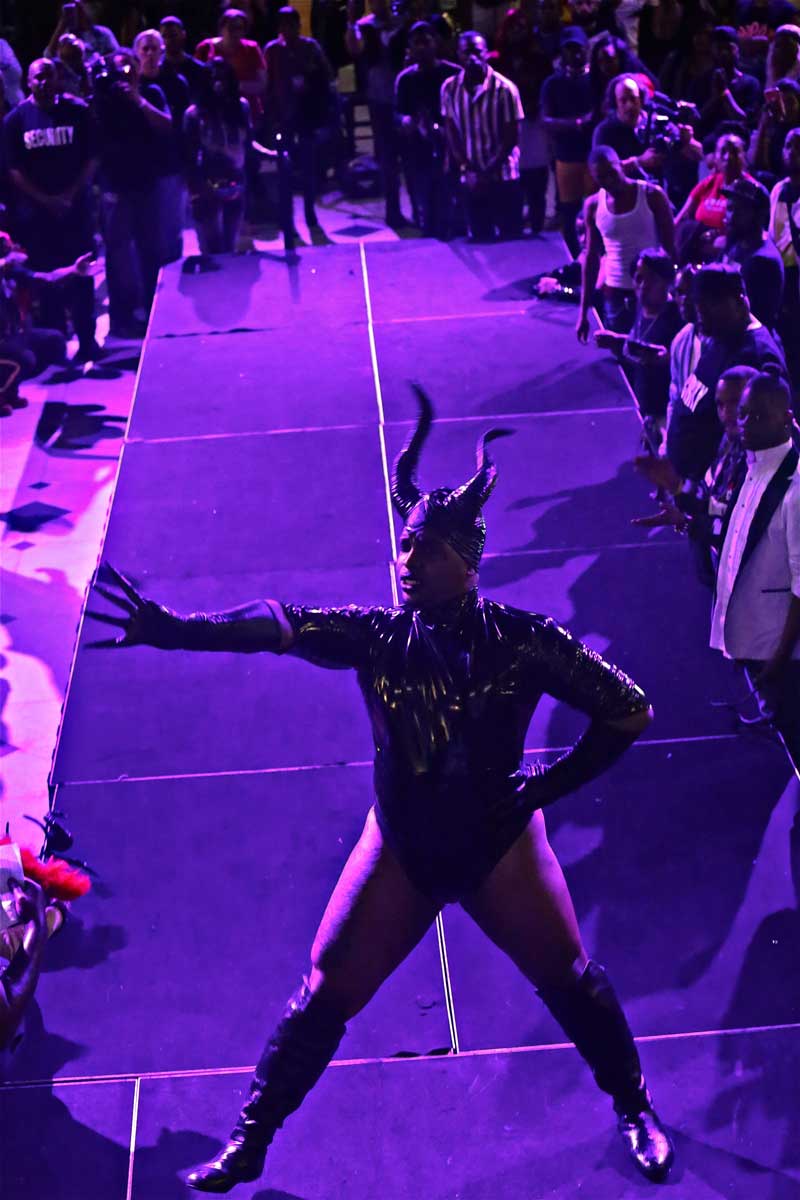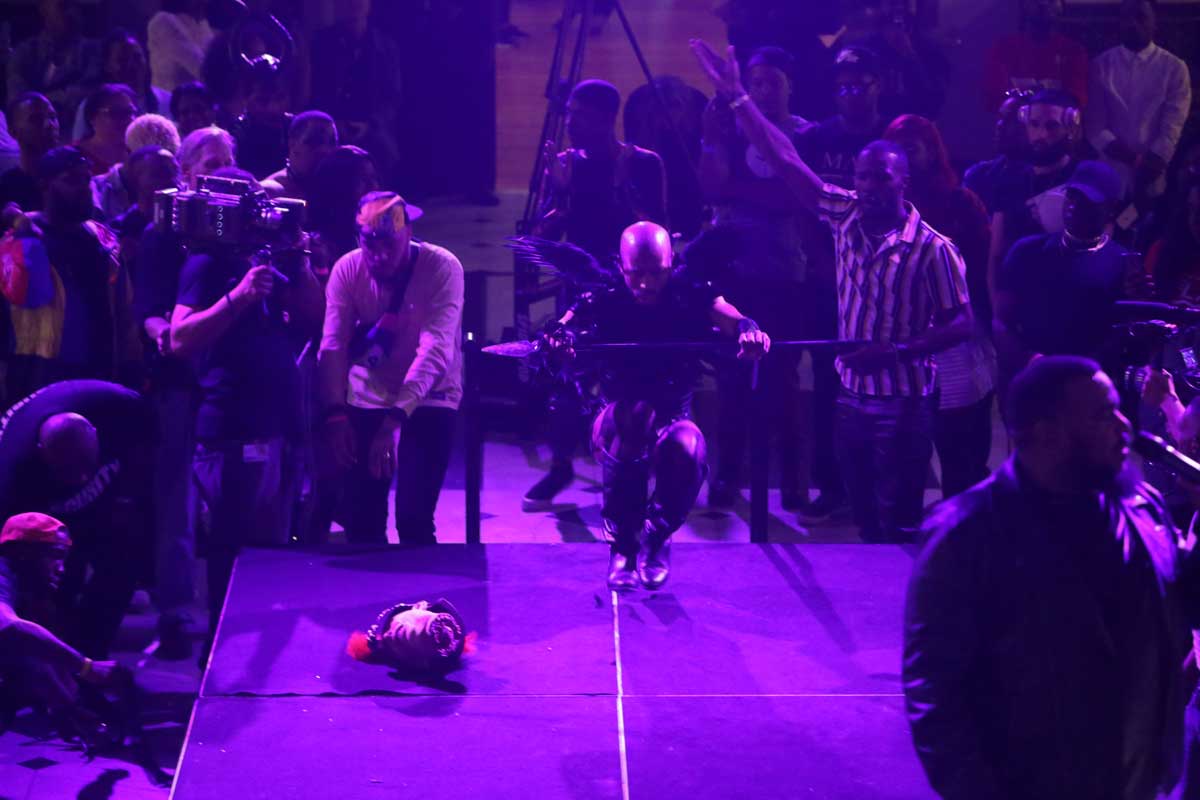Co-Curating
Categories
Our annual ball competition categories are co-curated by a ballroom advisory board and JHU curators. Library curators begin by presenting JHU’s special collections of books, manuscripts, and archives at workshops and informal gatherings. Ballroom artists then interpret those collections through ballroom performance traditions. The team ultimately co-produces the runway, vogue, and realness performance categories that make up our ball competitions.
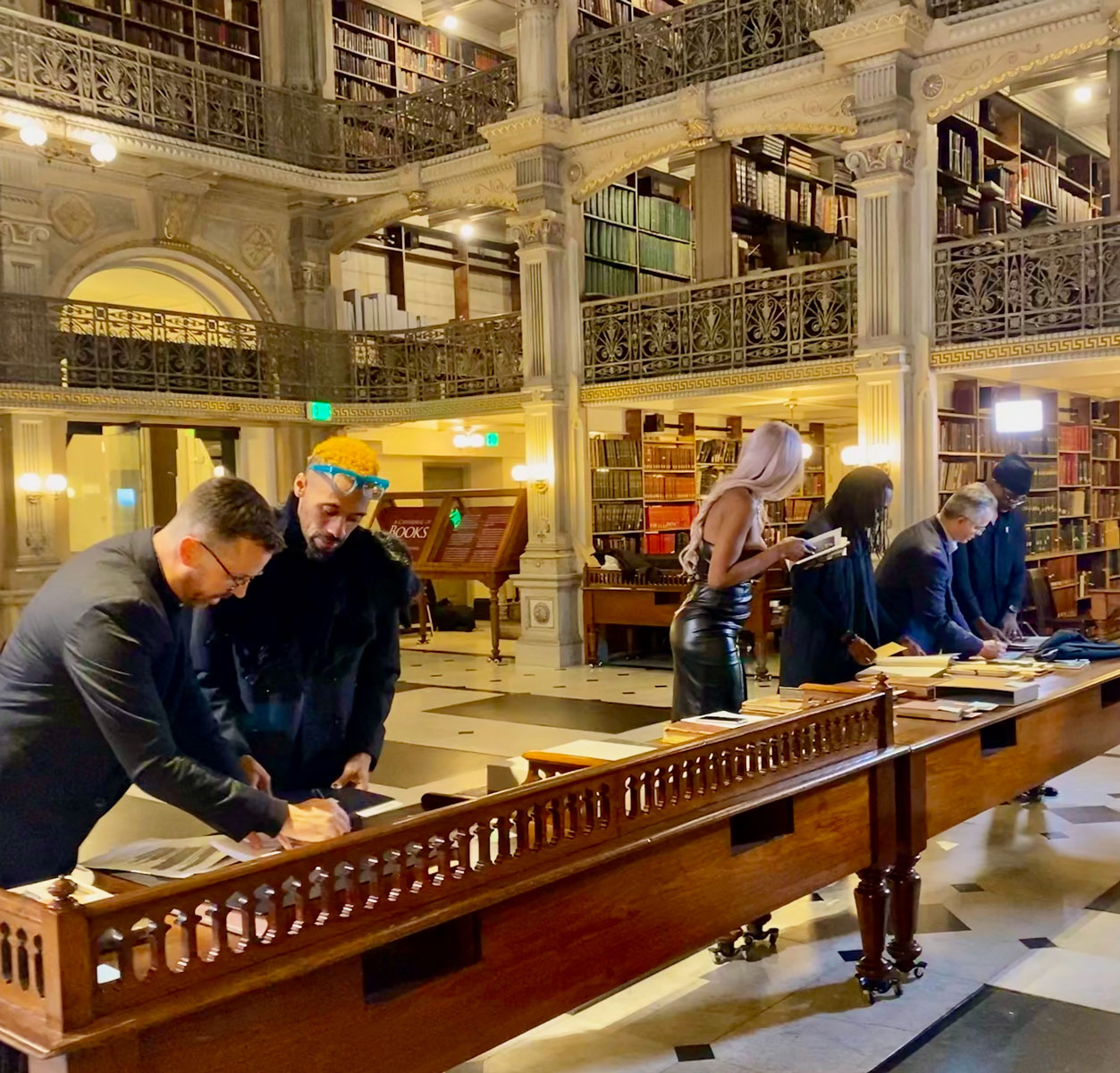
The ballroom planning committee consults Library materials, 2023.

2023 BALTIMORE BEAUTIFUL SYMBOLS
Text by Joseph Plaster
History and performance collided on Saturday, April 15, 2023, when more than three hundred ballroom artists and guests gathered for our third annual ball competition. The event, titled “Baltimore Beautiful Symbols,” honored “the trailblazers and blueprints – the ‘royalty’ – who paved the way for Baltimore’s ballroom scene.” For months leading up to the competition, I collaborated with four ballroom leaders—Legendary Rhonda Carr, Icon Enrique St. Laurent, Legendary Marco West, and Icon Sebastian Escada—to co-curate more than a dozen competition categories that showcased Baltimore’s ballroom history while also drawing inspiration from the George Peabody Library’s historic collections of rare books.
For the category “Femme Queen Perfect 10,” for example, trans women competed for prizes in a category Rhonda Carr wrote in honor of Baltimore ballroom legend Sabrina Icon: “a queen much like Cleopatra.” In instructions circulated before the ball, Carr asked performers to “compel the judges” by “embodying” both Cleopatra and Sabrina. As they competed, vintage YouTube videos of Sabrina Icon played on a screen behind the runway while commentators recounted her contributions to the scene, chanting in sync with the DJ’s signature beats. Every moment that night was referential, as performers embodied historical figures and fashion, putting modern takes on everything from the “Blood of our Ancestors” to the “Amazons.”
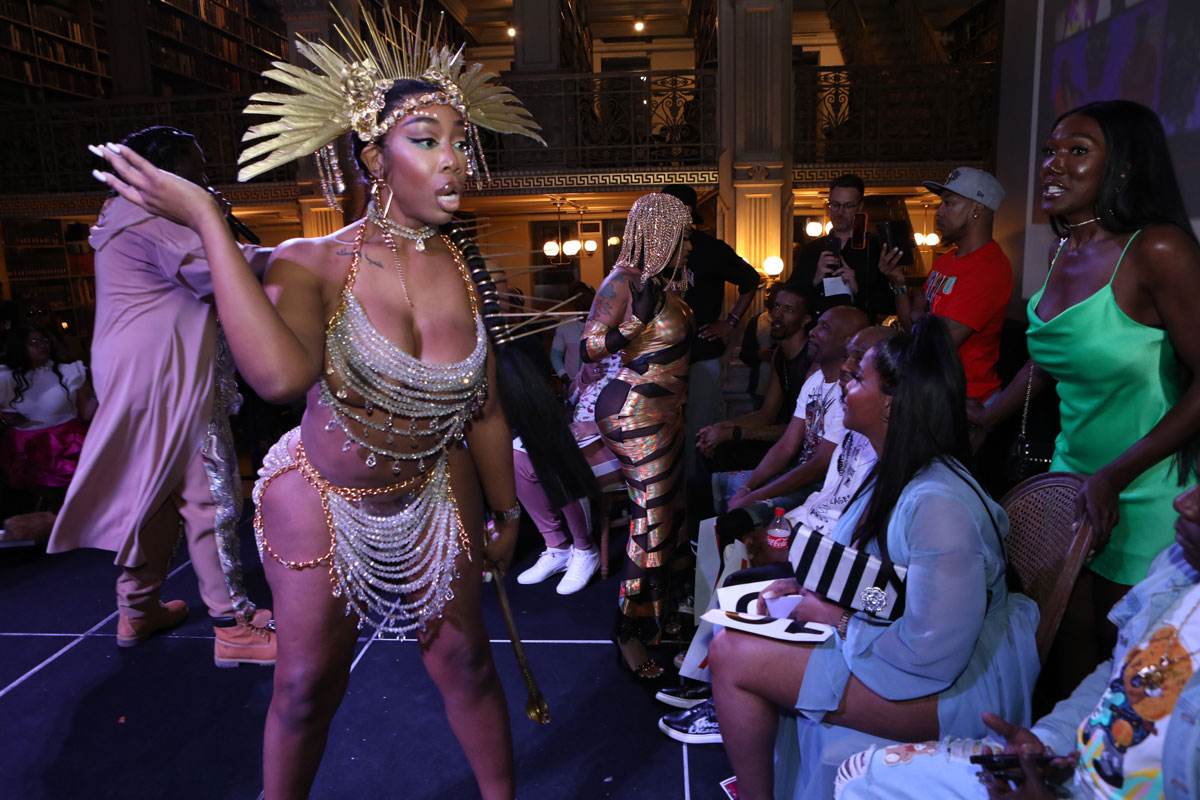
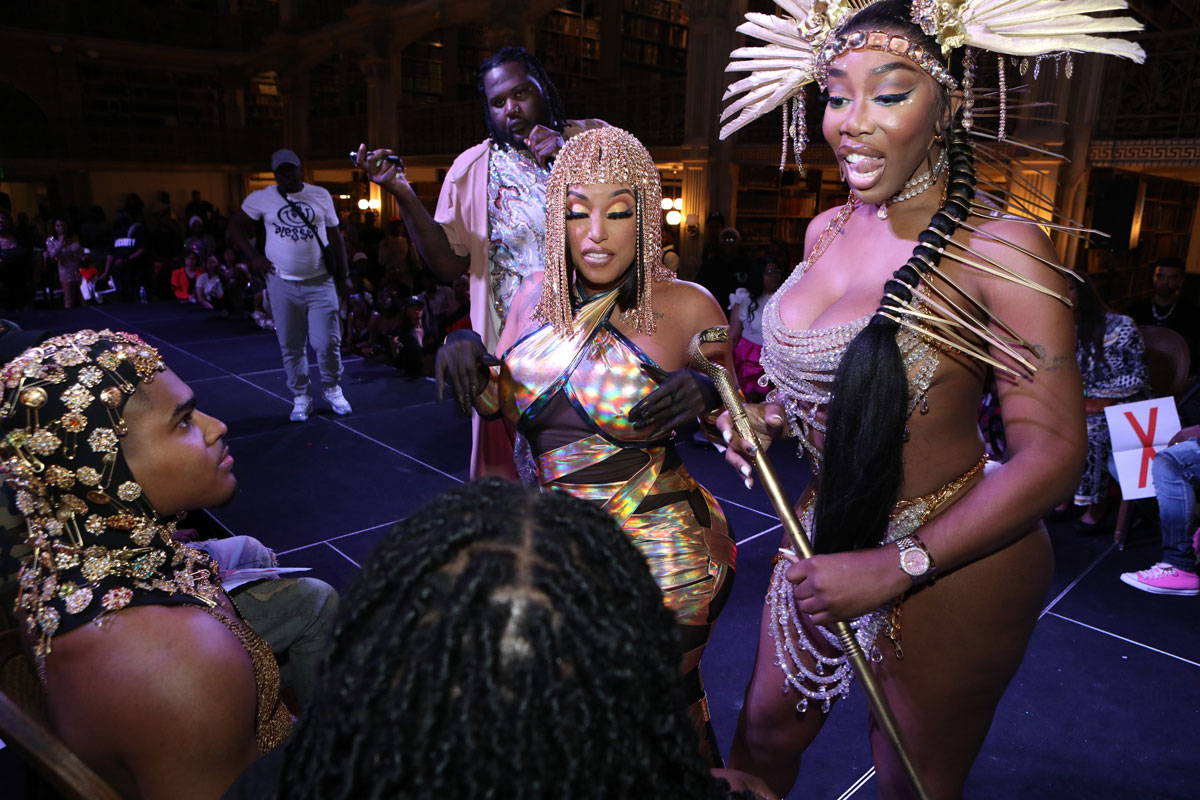
Performers compete in “Femme Queen Perfect 10,” 2023. Photos by Gerard Gaskin.
2023 BALTIMORE BEAUTIFUL SYMBOLS
Text by Joseph Plaster
History and performance collided on Saturday, April 15, 2023, when more than three hundred ballroom artists and guests gathered for our third annual ball competition. The event, titled “Baltimore Beautiful Symbols,” honored “the trailblazers and blueprints – the ‘royalty’ – who paved the way for Baltimore’s ballroom scene.” For months leading up to the competition, I collaborated with four ballroom leaders—Legendary Rhonda Carr, Icon Enrique St. Laurent, Legendary Marco West, and Icon Sebastian Escada—to co-curate more than a dozen competition categories that showcased Baltimore’s ballroom history while also drawing inspiration from the George Peabody Library’s historic collections of rare books.
For the category “Femme Queen Perfect 10,” for example, trans women competed for prizes in a category Rhonda Carr wrote in honor of Baltimore ballroom legend Sabrina Icon: “a queen much like Cleopatra.” In instructions circulated before the ball, Carr asked performers to “compel the judges” by “embodying” both Cleopatra and Sabrina. As they competed, vintage YouTube videos of Sabrina Icon played on a screen behind the runway while commentators recounted her contributions to the scene, chanting in sync with the DJ’s signature beats. Every moment that night was referential, as performers embodied historical figures and fashion, putting modern takes on everything from the “Blood of our Ancestors” to the “Amazons.”


Performers compete in “Femme Queen Perfect 10,” 2023. Photos by Gerard Gaskin.
2022 FIRE!! SHOWCASE
Text by Joseph Plaster
On May 21, 2022, ballroom artists competed in an invite-only performance showcase at the George Peabody Library. Because of Johns Hopkins University capacity limits during the COVID-19 pandemic, this event was invite-only. The ballroom planning committee—Icon Enrique St. Laurent, Legendary Marco West, and Icon Sebastian Escada—invited thirty-two performers from the East Coast to compete in six categories, each inspired by books and manuscripts related to black literature, arts, and history from the Sheridan Libraries collection.
The instructions for a Sex Siren category titled “The Messenger,” for example, read as follows: “In the 1830s, the late great American abolitionist David Walker, both an activist and clothing merchant in Boston, sewed copies of his revolutionary pamphlet, “Walker’s Appeal,” into sailor’s clothing. Taking as your inspiration this revolutionary act, I am looking for you ladies and gentlemen to find a clever and sexy way of hiding and then revealing a message of social awareness that’s relevant today!!!”
Performer Rhonda Carr, an advocate for HIV/AIDS education and a safer sex outreach worker for the University of Maryland Baltimore, arrived on the runway wearing a glamorous red cape. She then shed the cape to reveal a dress in the shape of a red ribbon, the universal symbol of awareness and support for people living with HIV/AIDS. Another performer competed in front of a sign that read “Face our Past Without Regrets.” Learn more about how performers interpreted Library materials by watching this short film about the 2022 FIRE!! Showcase, which incorporates cell phone footage shot by performers.
Performers compete in the Sex Siren Category, 2022. Photos by Gerard Gaskin.
2022 FIRE!! SHOWCASE
Text by Joseph Plaster
On May 21, 2022, ballroom artists competed in an invite-only performance showcase at the George Peabody Library. Because of Johns Hopkins University capacity limits during the COVID-19 pandemic, this event was invite-only. The ballroom planning committee—Icon Enrique St. Laurent, Legendary Marco West, and Icon Sebastian Escada—invited thirty-two performers from the East Coast to compete in six categories, each inspired by books and manuscripts related to black literature, arts, and history from the Sheridan Libraries collection.
The instructions for a Sex Siren category titled “The Messenger,” for example, read as follows: “In the 1830s, the late great American abolitionist David Walker, both an activist and clothing merchant in Boston, sewed copies of his revolutionary pamphlet, “Walker’s Appeal,” into sailor’s clothing. Taking as your inspiration this revolutionary act, I am looking for you ladies and gentlemen to find a clever and sexy way of hiding and then revealing a message of social awareness that’s relevant today!!!”
Performer Rhonda Carr, an advocate for HIV/AIDS education and a safer sex outreach worker for the University of Maryland Baltimore, arrived on the runway wearing a glamorous red cape. She then shed the cape to reveal a dress in the shape of a red ribbon, the universal symbol of awareness and support for people living with HIV/AIDS. Another performer competed in front of a sign that read “Face our Past Without Regrets.” Learn more about how performers interpreted Library materials by watching this short film about the 2022 FIRE!! Showcase, which incorporates cell phone footage shot by performers.
Performers compete in the Sex Siren Category, 2022. Photos by Gerard Gaskin.
Executive Realness
Text by Joseph Plaster
The Executive Realness category has been part of ballroom culture since at least the 1980s. Cultural critic madison moore argues that categories such as Executive Realness and Runway can be understood only within the context of white supremacy. For racialized subjects, moore argues in their book Fabulous, simply walking on the street can be dangerous. “In this context,” they offer, “when walking is elevated to the level of performance, what it underscores is survival and assertion—taking space, not waiting to perhaps one day be given it.”
This is why I appreciated the Executive Realness category description written by Advisory Board member Marco West, which planners posted to our Facebook event page: “Executives don’t always have to wear a suit. Tonight we simply want to see your interpretation of an executive. However you must have information about the Peabody Library as you plan to buy the library.” The category demands that competitors “take” and “own” the Peabody Library via performance.
Inspired by Apple’s decision to refurbish and open a store in Washington DC’s Carnegie Library, competitor Janol Balenciaga arrived at the inaugural Peabody ball with a faux-Wall Street Journal article that read, “Apple CEO Janol Balenciaga will Transform Peabody Library into an Apple Store.” As part of the conversion, “the library’s book collection is being relocated elsewhere, with reading rooms turned into product demonstration areas.”
Balenciaga explained his creative process in a phone interview:
I’m a high school counselor. My day-to-day is solely focused on getting young, black and brown, poor kids into college. I definitely value the concept of professionalism and finding ways to allow that to manifest in ways that are natural to me. So ‘Executive’ really gives me an opportunity not only to showcase what I do on the day-to-day and what feels really organic to me, but it also challenges me depending on the category.
So for instance, the Peabody Ball, it calls for us to not bring it like what the everyday executive would look like. So keeping the suit at home, but also showing that you have information on the Peabody Ballroom as you plan on buying it. So I got to learn about the Peabody. I learned that it is one of the premier libraries in Baltimore, and really one of the premier libraries in the country. I learned more about Johns Hopkins. I’m a history buff in general. So it all correlated to things that I’m naturally interested in.
I had to talk to my house father and he gave me some advice on the direction that I should move in, and then I took some of his ideas and capitalized off that. And then, boom, I’m gonna create my own newspaper and I’m going to be the CEO of Apple and I’m going to turn the Peabody into an Apple Store. [I] totally would not want that to happen in real life, but I thought it would be something fun, something that the judges and the Peabody would be like—“oh, like he actually took the time to think of a different way to portray what his interpretation of an executive should be for this ball.”
The fact that I was able to be in a space where all my identities were once not welcomed, it was kind of like a moment where I was like, “damn, I’m sticking it to the man right now.” Like this is what it’s all about. This is what ballroom is about. Like this is what being a queer, black man is about. Showing up in spaces where we’re not always welcome or where we’re not the norm. The ball was like a symbol of our community becoming the norm.
The purpose of ballroom is for you to have a community which you find through your ballroom house, through your ballroom family, through the participants in ballroom. The purpose of ballroom is to truly love who you are as a black and brown, queer or trans person. It’s also a space where you are challenged to grow. The skills that you have, you can hone all those skills and those can help you progress in different facets of life. It’s really like an underground community that supports you in different facets of life that expand beyond ballroom.
I took away the purpose [of the ball] to bridge the gap and start conversations on how Johns Hopkins can show up to be a greater ally for our community, recognizing the privilege that the institution has and knowing a lot of the challenges that our community faces. Knowing that there are a lot of challenges that continue to stifle our community, I really felt like the institution wanted to be an active change agent in that.
Janol Balenciaga competes in the Executive Realness category at the Peabody ball. Photos by Gerard Gaskin.
Janol Balenciaga’s faux Wall Street Journal prop. (Click to enlarge.)
Executive Realness
Text by Joseph Plaster
The Executive Realness category has been part of ballroom culture since at least the 1980s. Cultural critic madison moore argues that categories such as Executive Realness and Runway can be understood only within the context of white supremacy. For racialized subjects, moore argues in their book Fabulous, simply walking on the street can be dangerous. “In this context,” they offer, “when walking is elevated to the level of performance, what it underscores is survival and assertion—taking space, not waiting to perhaps one day be given it.”
This is why I appreciated the Executive Realness category description written by Advisory Board member Marco West, which planners posted to our Facebook event page: “Executives don’t always have to wear a suit. Tonight we simply want to see your interpretation of an executive. However you must have information about the Peabody Library as you plan to buy the library.” The category demands that competitors “take” and “own” the Peabody Library via performance.
Inspired by Apple’s decision to refurbish and open a store in Washington DC’s Carnegie Library, competitor Janol Balenciaga arrived at the inaugural Peabody ball with a faux-Wall Street Journal article that read, “Apple CEO Janol Balenciaga will Transform Peabody Library into an Apple Store.” As part of the conversion, “the library’s book collection is being relocated elsewhere, with reading rooms turned into product demonstration areas.”
Balenciaga explained his creative process in a phone interview:
I’m a high school counselor. My day-to-day is solely focused on getting young, black and brown, poor kids into college. I definitely value the concept of professionalism and finding ways to allow that to manifest in ways that are natural to me. So ‘Executive’ really gives me an opportunity not only to showcase what I do on the day-to-day and what feels really organic to me, but it also challenges me depending on the category.
So for instance, the Peabody Ball, it calls for us to not bring it like what the everyday executive would look like. So keeping the suit at home, but also showing that you have information on the Peabody Ballroom as you plan on buying it. So I got to learn about the Peabody. I learned that it is one of the premier libraries in Baltimore, and really one of the premier libraries in the country. I learned more about Johns Hopkins. I’m a history buff in general. So it all correlated to things that I’m naturally interested in.
I had to talk to my house father and he gave me some advice on the direction that I should move in, and then I took some of his ideas and capitalized off that. And then, boom, I’m gonna create my own newspaper and I’m going to be the CEO of Apple and I’m going to turn the Peabody into an Apple Store. [I] totally would not want that to happen in real life, but I thought it would be something fun, something that the judges and the Peabody would be like—“oh, like he actually took the time to think of a different way to portray what his interpretation of an executive should be for this ball.”
The fact that I was able to be in a space where all my identities were once not welcomed, it was kind of like a moment where I was like, “damn, I’m sticking it to the man right now.” Like this is what it’s all about. This is what ballroom is about. Like this is what being a queer, black man is about. Showing up in spaces where we’re not always welcome or where we’re not the norm. The ball was like a symbol of our community becoming the norm.
The purpose of ballroom is for you to have a community which you find through your ballroom house, through your ballroom family, through the participants in ballroom. The purpose of ballroom is to truly love who you are as a black and brown, queer or trans person. It’s also a space where you are challenged to grow. The skills that you have, you can hone all those skills and those can help you progress in different facets of life. It’s really like an underground community that supports you in different facets of life that expand beyond ballroom.
I took away the purpose [of the ball] to bridge the gap and start conversations on how Johns Hopkins can show up to be a greater ally for our community, recognizing the privilege that the institution has and knowing a lot of the challenges that our community faces. Knowing that there are a lot of challenges that continue to stifle our community, I really felt like the institution wanted to be an active change agent in that.
Janol Balenciaga competes in the Executive Realness category at the Peabody ball. Photos by Gerard Gaskin.
Janol Balenciaga’s faux Wall Street Journal prop. (Click to enlarge.)
OTA Sex Siren: “Battle of the Sexes”
Text by Joseph Plaster
The goal of the Sex Siren performance category is to bring together props, costume, and body in a way that entices everyone at a ball competition. Rhonda Icon argued in an oral history that the Sex Siren category enabled her to celebrate her identity as a trans woman: “You see all types of women on Essence. They’re models. They’re bathing suit models and things like that. But for a male to transition from a male to female and to still have a sexy body, where it’s very feminine, very soft, that was something to me because I hold it to my heart. Because not only am I real, I took it a step further and was able to come out of my clothes and still look feminine.”
Because “Sex Siren” takes its name from the sirens of Greek myth, the Advisory Board decided that our inaugural Peabody category would be inspired by Homer’s Odyssey. Peabody curator Paul Espinosa pulled a first edition of Griechische vasenmalerei (Greek vase painting) from the Library stacks, which features an image of a “Siren Vase” created circa 480 B.C.
Advisory Board member Keith Ebony Holt wrote the category description, which the planning committee posted on our Facebook event page: “Odysseus, who is known for his brains, believes he may have found a route home, but he first must pass the most beautiful ladies of the sea. Let’s see who will win this epic battle of the sexes.” The “male figure” competitors were instructed to “bring it” like “Odysseus lost at sea.” The “female figure” competitors were instructed to perform like “the seductive sirens luring all men to their death.”
At the ball competition, butch queens performed sex appeal as Odysseus. One man wore a harness of rope over his bare chest as though he were Odysseus bound to the mast of the ship. Trans women performed as the sirens as pictured on the Greek vase. We projected an image of the “Siren Vase” on a screen behind the elevated runway as performers competed.
Performing sex appeal in front of an image of “Siren Vase,” circa 480 b.c. Photos by Gerard Gaskin.
OTA Sex Siren: “Battle of the Sexes”
Text by Joseph Plaster
The goal of the Sex Siren performance category is to bring together props, costume, and body in a way that entices everyone at a ball competition. Rhonda Icon argued in an oral history that the Sex Siren category enabled her to celebrate her identity as a trans woman: “You see all types of women on Essence. They’re models. They’re bathing suit models and things like that. But for a male to transition from a male to female and to still have a sexy body, where it’s very feminine, very soft, that was something to me because I hold it to my heart. Because not only am I real, I took it a step further and was able to come out of my clothes and still look feminine.”
Because “Sex Siren” takes its name from the sirens of Greek myth, the Advisory Board decided that our inaugural Peabody category would be inspired by Homer’s Odyssey. Peabody curator Paul Espinosa pulled a first edition of Griechische vasenmalerei (Greek vase painting) from the Library stacks, which features an image of a “Siren Vase” created circa 480 B.C.
Advisory Board member Keith Ebony Holt wrote the category description, which the planning committee posted on our Facebook event page: “Odysseus, who is known for his brains, believes he may have found a route home, but he first must pass the most beautiful ladies of the sea. Let’s see who will win this epic battle of the sexes.” The “male figure” competitors were instructed to “bring it” like “Odysseus lost at sea.” The “female figure” competitors were instructed to perform like “the seductive sirens luring all men to their death.”
At the ball competition, butch queens performed sex appeal as Odysseus. One man wore a harness of rope over his bare chest as though he were Odysseus bound to the mast of the ship. Trans women performed as the sirens as pictured on the Greek vase. We projected an image of the “Siren Vase” on a screen behind the elevated runway as performers competed.
Performing sex appeal in front of an image of “Siren Vase,” circa 480 b.c. Photos by Gerard Gaskin.
BQ Vogue Fem: “Battle of Heaven and Hell”
Text by Joseph Plaster
Competitors in the vogue fem performance category use the five elements of vogue–hand performance; duckwalk; catwalk; floor performance; and spins and dips–to tell a story through movement. “You’re telling a story,” ballroom Icon Monique Carter explained in an oral history. “You’re bringing your personality to the floor in vogue. And we’re all different. Some people are really dramatic, like drama queens. Some people are really feminine girls, dainty, like soft girls. It’s just bringing who you are in an art form: a form of vogue.”
Ballroom performers often refer to two styles of vogue fem: “angel” or “soft” voguing, which features a softer, “feminine” execution; and “devil” or “dramatic” voguing, which features a stunt-filled, dramatic execution. Building on this tradition, Advisory Board member Keith Ebony Holt asked Library curators for a book that featured a battle between heaven and hell. Curator Paul Espinosa responded with an illustrated 1688 edition of John Milton’s Paradise Lost.
Holt wrote the category description based on this book, which we posted on our Facebook event page along with illustrations from the book: “The epic poem Paradise Lost . . . explains the story of God and Satan battling for humanity’s soul as Satan tempts Adam and Eve in the garden of Eden. Tonight we want you to tell the story of this war between Heaven and Hell.” Holt asked “soft” voguers to “bring it in all white” and “dramatic” voguers to “bring it in all black.”
Performer Buffy West traveled from Atlanta along with several house members to compete in the category. West explained their creative process in a phone interview with Joseph Plaster:
I read up on a lot of [Paradise Lost] prior to actually walking the ball just to ensure I understood the character. The main thing that I captured was trying to define the story of the battle between heaven and hell. I helped a few people [in my house] understood that when it comes to the battle between good versus evil, there was emotion tied to it, and there was a long, drawn-out fight.
I ensured they understood exactly what the battle was like and really what the judges would be looking for . . . as far as the storytelling part. Because I feel like storytelling in vogue fem or in vogueing in general is very important. That way people in the audience can understand.
The main illustration of the actual demon looking up to heaven really drew me in for a different feel…[I thought,] “What type of concept can I give and what type of look will read across what they wanted from back in the day to tie it to somewhat of a new generation?” Which is where the latex came from, the long nails, [and] my Maleficent hell horns.
Telling your story and getting prepared, you wanna think about, “what looks godly? What movements can you do to represent somebody that’s battling the Devil or battling hell or demons that could be included in your performance while getting your tens.” Then the same thing for hell. We had a discussion [in our house]: “make sure you tell a story.” You want your little details as far as your effect.
Like with [my house member] walking on stage with his head cut off with the knife, that gave, “I just got off the battleground. I won. Now, let me show you I can continue on.” The same thing with me, it was more trying to get across to say, “Hey, my battle is not over. I’m here. So, I want the war to start. Let’s go. I got all day.”
I’ve been in ballroom since 2011. I’ve never been to a fab venue like that. It gave us a different side of ballroom to be around so much history. This makes moments for people that really hold it dear to their heart. You guys give us a platform and the space to really share our talent. I’m pretty sure that was a lot of people’s first ball or first ball interaction and being able to watch it. That’s where we go to say, “Hey, this is what I do on a regular. Let me invite you into my world.” It just bridges gaps and it informs new interests.
Illustration from a 1688 edition of Paradise Lost, part of the Peabody Library collection.
Buffy West performs Vogue Fem at the Peabody ball. Photos by Gerard Gaskin.
BQ Vogue Fem: “Battle of Heaven and Hell”
Text by Joseph Plaster
Competitors in the vogue fem performance category use the five elements of vogue–hand performance; duckwalk; catwalk; floor performance; and spins and dips–to tell a story through movement. “You’re telling a story,” ballroom Icon Monique Carter explained in an oral history. “You’re bringing your personality to the floor in vogue. And we’re all different. Some people are really dramatic, like drama queens. Some people are really feminine girls, dainty, like soft girls. It’s just bringing who you are in an art form: a form of vogue.”
Ballroom performers often refer to two styles of vogue fem: “angel” or “soft” voguing, which features a softer, “feminine” execution; and “devil” or “dramatic” voguing, which features a stunt-filled, dramatic execution. Building on this tradition, Advisory Board member Keith Ebony Holt asked Library curators for a book that featured a battle between heaven and hell. Curator Paul Espinosa responded with an illustrated 1688 edition of John Milton’s Paradise Lost.
Holt wrote the category description based on this book, which we posted on our Facebook event page along with illustrations from the book: “The epic poem Paradise Lost . . . explains the story of God and Satan battling for humanity’s soul as Satan tempts Adam and Eve in the garden of Eden. Tonight we want you to tell the story of this war between Heaven and Hell.” Holt asked “soft” voguers to “bring it in all white” and “dramatic” voguers to “bring it in all black.”
Performer Buffy West traveled from Atlanta along with several house members to compete in the category. West explained their creative process in a phone interview with Joseph Plaster:
I read up on a lot of [Paradise Lost] prior to actually walking the ball just to ensure I understood the character. The main thing that I captured was trying to define the story of the battle between heaven and hell. I helped a few people [in my house] understood that when it comes to the battle between good versus evil, there was emotion tied to it, and there was a long, drawn-out fight.
I ensured they understood exactly what the battle was like and really what the judges would be looking for . . . as far as the storytelling part. Because I feel like storytelling in vogue fem or in vogueing in general is very important. That way people in the audience can understand.
The main illustration of the actual demon looking up to heaven really drew me in for a different feel…[I thought,] “What type of concept can I give and what type of look will read across what they wanted from back in the day to tie it to somewhat of a new generation?” Which is where the latex came from, the long nails, [and] my Maleficent hell horns.
Telling your story and getting prepared, you wanna think about, “what looks godly? What movements can you do to represent somebody that’s battling the Devil or battling hell or demons that could be included in your performance while getting your tens.” Then the same thing for hell. We had a discussion [in our house]: “make sure you tell a story.” You want your little details as far as your effect.
Like with [my house member] walking on stage with his head cut off with the knife, that gave, “I just got off the battleground. I won. Now, let me show you I can continue on.” The same thing with me, it was more trying to get across to say, “Hey, my battle is not over. I’m here. So, I want the war to start. Let’s go. I got all day.”
I’ve been in ballroom since 2011. I’ve never been to a fab venue like that. It gave us a different side of ballroom to be around so much history. This makes moments for people that really hold it dear to their heart. You guys give us a platform and the space to really share our talent. I’m pretty sure that was a lot of people’s first ball or first ball interaction and being able to watch it. That’s where we go to say, “Hey, this is what I do on a regular. Let me invite you into my world.” It just bridges gaps and it informs new interests.
Illustration from a 1688 edition of Paradise Lost, part of the Peabody Library collection.
Buffy West performs Vogue Fem at the Peabody ball. Photos by Gerard Gaskin.
